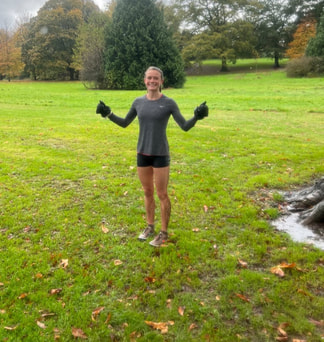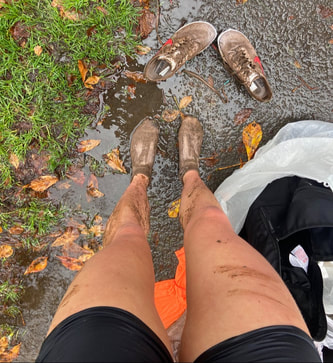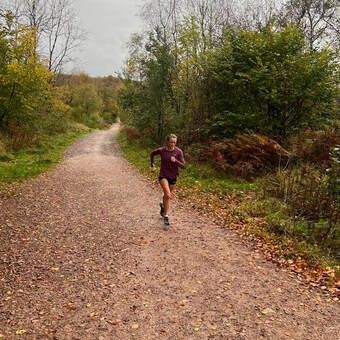|
One thing I love about winter training is the arrival of fartlek sessions. For those that don’t know, fartlek is a session that involves a mixture of time and intensity. The focus tends to be on time as opposed to distance and quite frequently is done on a mixture of terrain. This means the focus falls onto effort as opposed to pace, a refreshing change from the focus of summer training. They are also a great way of reintroducing hard work after some time off, as you can focus solely on effort and ignore what the watch says. An example of a fartlek session would be 5 minutes, 4 mins, 3, 2, 1, 2, 3, 2, 3, 2, 1 with the following rep as the recovery time. So after the 5 minute effort, you would have 4 minutes recovery. The session tends to be continuous, so rather than standing still for 4 minutes, you continue running, but at a steadier pace. You then work through different paces and get your body familiar with different intensities. Here is why I love fartlek sessions: Run to feel. With Fartlek sessions, the focus is solely on effort. It doesn’t matter what pace you are running, as long as you are working hard. It encourages you to tune in to how paces feel, as opposed to running to the pace you feel you should, so you can learn to understand what effort feels like to your body. I don’t often look back at the paces, as they are irrelevant, especially if I’m running on grass, but if I’m on a more reliable surface, it can be fun to see how close you were to the pace you thought you were running. It also allows to run to how YOU feel that day, which can ensure you don’t go too hard. This allows you to piece together more consistent weeks of training. Doesn't put limits on you. Sometimes, without even realising, we can actually put limits on ourselves. We set ourselves the pace we think we should be hitting and if we overreach this, we frequently tell ourselves to slow down. However, sometimes that faster pace is what we are actually capable of. With the focus on feel that fartleks provide, you can really focus on effort, and sometimes you might actually surprise yourself. Builds strength.
As tough as it can feel at times, winter training is an excellent way to build strength, and fartlek is a valuable component of this. As fartlek sessions tend to be done on grass or varying terrains, your body has to work harder to perform the running motion. As a result, you will get stronger without even realising. For example, to run 1 minute at 5k pace, requires a lot more effort on grass than it does on the road. By training on grass, you develop strength, so when you step on to the road or track, you can put in the same effort as you did on grass, and go faster! Less forced. A bit like cross country racing, fartlek is one of the purest forms of running. They is no clock to try and beat, your focus is completely on the running motion and putting in as much effort as you can. This means it can be much less forced and more natural. It als most trips running back to complete basics and encourages you to focus on running strong and smoothly, without forcing a specific pace that perhaps you aren’t ready for yet, or isn’t right for you that day. Refreshing. The main reason I love fartlek sessions, especially on grass, is because they offer a refreshing change after a long summer of lots of pace specific work. Throughout summer, we focus a lot on hitting specific paces and running certain times, both in training and racing. Fartlek offers a complete break from this time focused mindset. Time/pace is irrelevant. As long as you have put in the work, ran to what feels right for that time interval, and had fun, you have achieved the goal of the session. If you haven’t already kicked the winter off with some fartlek sessions, give them a go! I’ve listed a few examples below: 7 x4 mins made up of 2 mins at tempo feel, 2 mins at 10k feel with 2 mins easy jog between sets. Remember, there is no specific pace, focus on achieving the feeling of those efforts! 4-6 sets of 3,2,1 with the following rep length as recovery. This session is great for working through the gears. You want to focus on ensuring the effort is different for each rep length. The 1 minutes should be faster than the 2 minutes and the 3 faster than the 2! 2-4 sets of 6 minutes hard, 1 minute easy jog, 3 minutes hard, 2 minutes easy jog. I love this session as you can focus on finding a nice flow for the 6 minutes and feel strong and then pick the pace up for the 3 minutes. Let me know if you give any of these a try!
0 Comments
Leave a Reply. |
Hannah IrwinI love to run and I love to write, so I write about running! Archives
March 2023
Categories |



 RSS Feed
RSS Feed
